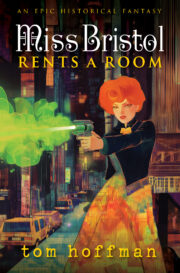What REALLY Sold in 2016?
by Mary Rosenblum
Ebooks? Print? Self Published? Traditional Publisher?
Finishing the book can seem like such a step forward! Pop the champagne!
But then the author sits down to contemplate publishing. Oh, the thorny questions! Try for a commercial publisher? Do the self publishing route? Bring it out as an ebook only? Pay for print layout and an ISBN and bring it out as print?
So many questions!
It can raise anyone’s blood pressure!
The latest on authorearnings.com, a good source of ‘who’s making what’ information, is that the times they are a’changin’ for today’s authors. Maybe that stubborn determination to find an agent and get picked up by a NY publisher so that your book ends up in Barnes and Noble isn’t really worth the (huge) effort.
Let’s see how the numbers shake out for authors here!
PRINT VERSUS EBOOK
Every genre has its own print-versus-ebook profile. Some genres are populated by big ebook readers while others have readers who still go for print. So there is no single answer for that question. There can be a difference even within a genre, depending on the age and gender of your readers. That’s always something I consider when I’m evaluating a book — who is the readership and what do they read?
PRINT PREJUDICE
Print books used to be purchased pretty exclusively in brick and mortar bookstores. It is nearly impossible for small commercial publishers and self published authors to get books onto those bookstore shelves, and authors sometimes come out losing money when they do because of bookstore ‘return’ requirements.
But now?
In 2016, 43% of all traditionally published books were purchased online. Now, THAT is a reason to break out the champagne! Why? Because most readers pay little to no attention to the publisher. As long as the small press or self published book looks professional and has a professional looking cover, it’s competitive with books from the ‘bookstore’ publishers. If your ebook or print book includes those 5 critical elements for success and looks like the other professionally published books out there, readers don’t care who published it. They’ll look at price.
Aha! That might just be the reason that self publishing authors sell almost as many ebooks as the traditional publishers. They can usually price their books lower.
But what about print books?
2016 Self Published Print Book Sales
In 2016, 21,800,000 self published print books were sold, mostly published through Create Space. The average price was $10.34. Amazon imprints sold another 959,000 copies.
That’s a lot of print book money!
What does it mean for you?
Know whether your readers prefer print or ebooks. While it’s good to have a print version out there for the many ebook readers who like to put their favorite books onto a real bookshelf, it can be critical to have that print book out there if most of your potential readers prefer print or simply don’t use an ereader at all!
If you are publishing traditionally with a small commercial publisher who brings your book out as an eboook, find out whether or not that publisher will bring your book out in print. Many will not, although they’ll reserve the right to publish the books in print form, too, for a period of time, usually two years. They will spend the extra dollars to publish the book in print only if it sells well as an ebook.
You can negotiate to terminate the publisher’s option after that initial period is up, and you should do that if the publisher does not bring the book out in print, and your readership includes significant print-only readers. Even if you pay for a new cover and for page layout, it will not take many sales to recoup your expenses and start making money if your ebook is selling at all well. But again — just how many books sell depends on your genre, your readership, and also on whether or not your book includes those 5 key bestseller elements.
The Self Publishing Author’s Share
What are self publishing authors really selling?
A lot! Here are the 2016 sales of all adult fiction ebooks, according to Authorearnings.com
- Traditional publisher; 175,000,000 ebooks sold
- Self published authors: 150,000,000 ebooks sold
- Amazon imprints: 50,000,000 ebooks sold
What does this mean for you? It means that readers are buying nearly as many self published ebooks as they are buying ebooks from small press and New York publishers. If you’re an author looking at a career, the greater price and promotion control of self publishing are going to make it well worth your while to self publish. You will undoubtedly make more money.
The print book picture is not so rosy!
While 141,351,000 adult fiction print books sold in 2016, the self published share s so small that it’s hard to even estimate it on the graph!
Ouch!
There can be many reasons for this poor showing.
- Many publishers publish only ebooks in popular genres.
- Print books are expensive, and first time authors may see poor print sales for that reason. Readers will take a chance on a new author for a $3.99 ebook, maybe not for a $12.99 print book!
- First impressions matter more — a non-standard cover or interior layout can make a reader think twice about shelling out that $12.99.
- Book discounters and free book giveaways make it easier to market ebooks to large numbers of potential fans.
The bottom line is that you are probably better off self publishing your ebook, and print is worth your time if your book has those five key elements and is selling well. You should easily pay for the cost of producing it and print copies are invaluable at readings, signings, and other author events, even if your readers prefer ebooks.
If your readership prefers print books, print is very important indeed!
Download my free pdf The Bestseller Bullseye to learn exactly what those five key elements of the bestseller are and make sure your book includes them all before you publish it or market it to a commercial publisher!
•••
An award-winning author of New York published Science Fiction and mystery novels as well as dozens of short stories, Mary Rosenblum began teaching writing fifteen years ago, mentoring student authors through the writing and publishing process. Now, as the Literary Midwife at New Writers Interface (where this post first appeared), she still helps new authors navigate safely through the process of publishing today, and teaches them how to promote their books effectively in today’s brave new publishing world.



